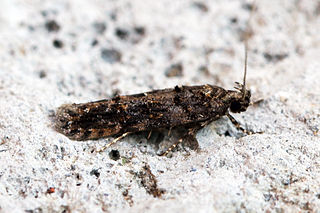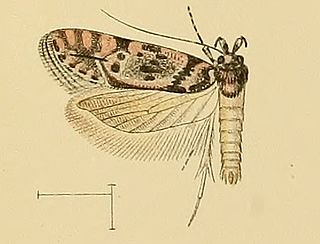
A language family is a group of languages related through descent from a common ancestral language or parental language, called the proto-language of that family. The term "family" reflects the tree model of language origination in historical linguistics, which makes use of a metaphor comparing languages to people in a biological family tree, or in a subsequent modification, to species in a phylogenetic tree of evolutionary taxonomy. Linguists therefore describe the daughter languages within a language family as being genetically related. The divergence of a proto-language into daughter languages typically occurs through geographical separation, with different regional dialects of the proto-language spoken by different speech communities undergoing different language changes and thus becoming distinct languages from each other.

Aquarius (♒︎) is the eleventh astrological sign in the zodiac, originating from the constellation Aquarius. Under the tropical zodiac, the Sun is in the Aquarius sign between about January 20 and February 18. Aquarius is one of the three air signs, alongside Gemini and Libra. The ruling planets of Aquarius are Saturn, and Uranus. The opposite sign of Aquarius is Leo.
J, or j, is the tenth letter in the Latin alphabet, used in the modern English alphabet, the alphabets of other western European languages and others worldwide. Its usual name in English is jay, with a now-uncommon variant jy. When used in the International Phonetic Alphabet for the voiced palatal approximant it may be called yod or jod.

Teleiopsis is a genus of moths of the family Gelechiidae.

Teleiopsis diffinis is a moth of the family Gelechiidae. It is found in Europe, North Africa, the Near East, central Asia and Siberia (Transbaikalia).
Teleiopsis terebinthinella is a moth of the family Gelechiidae. It is found in southern and south-eastern Europe, except the Iberian Peninsula and France. It has also been recorded from Turkey and the Near East. It is found up to heights of 1,600 meters (5,200 ft).
Teleiopsis bagriotella is a moth of the family Gelechiidae. It is found in the mountainous areas of Europe, from Portugal and Spain to Greece. In the north it is found up to the Tatra mountains. Outside Europe it is also found in Turkey. It is found at heights between 1,200 and 3,000 meters.
Teleiopsis latisacculus is a moth of the family Gelechiidae. It is found in North Macedonia and from Turkey to Egypt.

Teleiopsis rosalbella is a moth of the family Gelechiidae. It is locally distributed in central and south-eastern Europe. Its range extends from Belgium to Bosnia-Herzegovina. It is also present in Turkey. It is found on altitudes from 140 to 1,400 meters.

Teleiopsis lunariella is a moth of the family Gelechiidae. It is found on the Canary Islands.

Gelechiinae is a subfamily of moths in the family Gelechiidae. It was described by Henry Tibbats Stainton in 1854.
Teleiopsis brevivalva is a moth of the family Gelechiidae. It is found in India.
Teleiopsis insignita is a moth of the family Gelechiidae. It was described by Pitkin in 1988. It is found in the Palearctic realm.

Teleiopsis baldiana is a moth of the family Gelechiidae described by William Barnes and August Busck in 1920. It is found in North America, where it has been recorded from California.
Teleiopsis motleella is a moth of the family Gelechiidae. It is found in Korea.
Teleiopsis tchukotka is a moth of the family Gelechiidae. It is found in the Russian Far East, where it has been recorded from the Chukotka Autonomous Okrug.
Teleiopsis sophistica is a moth of the family Gelechiidae. It is found in China (Shanghai).






